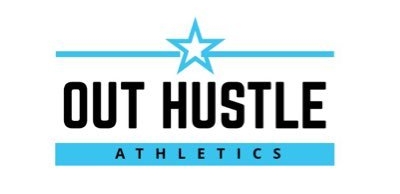The Basics of Training Structure
/In life, what it takes to accomplish something is what it takes. There is no way around it. They’re a thousand ways to skin a cat, but there is only one way that will work for you. Every athlete comes from a different background, lifestyle, sport history, etc. Every athlete will view and respond to coaching differently, they will each take a different path to get to the same outcome, and that’s the point.
While I don’t know what every athlete’s life story is, I do know that they’re human, and that means I can get them from point A to B when given time. At the end of the day, the body responds to stimuli. The stimuli perceived, along with the order of stimuli, and current status of the athlete, will help dictate the adaptation from the prescribed stimuli.
What is the Stimulus Provided?
There is a curvilinear relationship between the velocity of a given movement, and the force produced by the given movement. For the most part, as the force of the movement goes up, the velocity of the movement goes down. The same is true the other way around.
This means that if you are looking to increase a particular 1RM, you will need to spend a bunch of your training time in the zone of high force/ load velocity. If you are trying to run a faster 40yd dash, you will be spending most of your time in the velocity based zone. If you’re training to be a field athlete, you will be spending a bunch of time in differentiating ratios of velocity based and forced based loads. When/how much you spend your time in each zone is dependent on your training experience, time of year, and performance goal.
When is the Stimulus Provided?
Each type of stimuli will solicit a different response from the body, some of the stimuli are much more devastating physically and/or neurologically than others. Because of the individual response to stimuli, how you organize the training day/ week/ month/ year is of vital importance.
For example, increasing lean muscle mass (hypertrophy) involves loads of moderate-to-high force outputs, with volume schemes of 3-5 sets x 6-10 reps. This stimulus causes a much more catabolic response than other forms of stimuli. Goals of increasing strength involves loads of high force output with volume schemes of 3-8 sets x 2-6 reps. Still a very intense training session that requires long rest periods (2-5 minutes), but much less catabolic in nature.
Traditionally, the thought process behind which training stimulus should come first is that you complete the hypertrophic phase before the strength phase. The thought is that athletes with higher amounts of lean muscle mass have a higher ceiling of strength ability compared to those with less muscle mass. So, training strength before hypertrophy might not solicit the best possible strength response.
What is the Athlete’s Current Training Status?
The novice athlete is an empty bucket that possesses loads of potential in regards to filling up that bucket. This means for the most part, anything you do with these athletes will work. However, how much you get out of your program is determined by your style of periodization.
The novice athlete will respond positively & quickly to most any training program, but they will also lose that stimulus just as quickly if not maintained.
So if we look at the traditional training model, hypertrophy before strength, what’s to say that the athlete will not lose some size if all they do is work on strength? This is not likely as these two stimuli are often blended together in most training situations, but what if we paired hypertrophy with a much different stimulus type, like high velocity?
The loads required by high velocity are much lighter than those of strength, and not intense enough to hold onto the strength adaptation the novice recently obtained. The novice athlete will often lose adaptations caused by strength training if not maintained at least 1-2x/ week.
This is why we take a non-traditional approach to performance training. We continually dose athletes with strength, hypertrophy, high velocity, and everything in between to make sure they continue to build all qualities throughout the year. However…. an experienced athlete is better able to hold on to adaptations compared to the novice. The experienced athlete may see better adaptation from a traditional model of periodization because they are given more time, therefore more volume to adapt to a particular stimulus, and they can still maintain the stimulus trained from the pervious cycle.
It’s Still Not Enough
You can chase loading zones, rest periods, volume schemes, force output, joint positions, range of motion, etc. The fact of the matter is that is all comes down to consistency. The response to any stimuli takes more than 1 dose to see any benefit from it. Imagine you’re building a sandcastle on a beach. You want to create an award winning castle. If you dig a trench, protect the castle from the tide, continually add to the castle, and repair damages, you will create a solid structure that can last awhile and collect numerous awards. Ignore the damages, or you don’t tend to the maintenance of the castle, quickly the castle is swept away by the tide. The the castle is your performance level. If you want to elevate your performance, it must be protected, maintained, and built upon regularly.
If you made it this far, you might as well check out our instagram page (we post this stuff all the time)
If you’re still here you must really be bored, but to claim your reward, contact coach Nate at nate@tpstrength.com.















